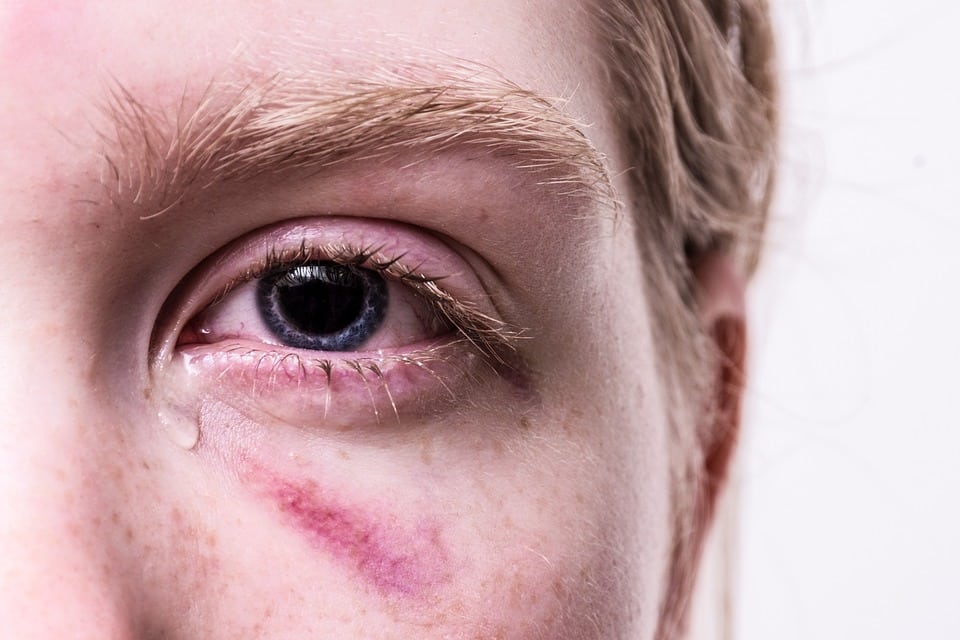Contents
Who is at risk?
We all are. Each year there are about 2.5 million eye injuries in the USA. (American Academy of Opthalmology) Not that they all are life-changing. Most of us have experienced a speck (small foreign body) in the eyes. The speck may have scratched the eye’s surface (corneal abrasion) and not caused any long-term effects. The most common form of eye injury is a foreign body in the eye. They account for 35% of all eye injuries. More critical is damage caused by foreign bodies which penetrate the cornea. i.e., remain lodged in the eye, e.g., dirt, fragments of glass or plastic, splinters of wood or metal—injuries like these account for 25% of eye injuries.
Out of the 2.5 million eye injuries yearly, about 1.2 million, half the total, occur in the home. Another half million incidents happen in the workplace. A further 25 thousand people need treatment for sports-related eye injuries.
Nearly 35% of eye injuries happen to people aged 18-45, and 25% to children and teens.
About 5% of ER visits are for eye injuries.
We are all at risk. We must know the possible dangers and how to avoid them.
Common causes of eye injury
The five leading types of eye injury can occur in almost any environment. Still, each is more likely sometimes than others.
The main types of eye injury are:-
Corneal abrasion: Is caused by a poke in the eye by a finger or an overhanging tree branch. Corneal abrasion is also caused by having a foreign object, such as a grain of sand, trapped under your eyelid.
Direct Impact: Being hit in the eye by something coming toward you at speed, for example, a nerf gun bullet, a tennis ball, or splinters of wood or metal.
Blunt force trauma: when a blunt object comes into contact with the eye and the surrounding bone or tissue, for example, a large ball or forcible contact with a hard surface in an accident.
Chemical splash: Eyes can be damaged by liquid, powdered, or aerosol chemicals, for example, dishwasher detergents, oven cleaners, and disinfectants. In the workplace-industrial/agricultural, most chemicals and solvents, especially acidic substances, fertilizers and pesticides, can cause damage to the eyes.
Prevention
Common household incidents cause 125 thousand eye injuries yearly. You can avoid 90% of these eye injuries by adopting safety practices and eye protection. (American Academy of Ophthalmology).
Understandably, It is not practical to wear safety glasses all the time. But it makes sense to have them available when working with equipment that may cause flying particles. Chemical splashes and even paint significantly contribute to eye injury incidents. Follow all the manufacturer’s instructions for usage, and do not mix with other products.
Regular glasses do not always provide adequate protection. You can obtain prescription safety eyewear and standard safety glasses suitable for children.
Young children, especially those under five, are at more risk from falls, misuse of toys and everyday tools such as knives and forks, and exposure to harmful household products ( cleaning products, paints, adhesives, etc.). Toys are another source of risk for children. All toys with sharp edges, points, or spikes pose an additional risk. Toys that fly or are projectile firing present a specific problem for younger children, either in their own hands or in the hands of their playmates.
Are my family and I insured for eye injury?
Most families in the USA benefit from a group (usually employer-sponsored) health insurance plan that is ACA-compliant. These plans must include coverage of preventive screenings and assessments for children (age <5). Check with your plan coordinator to know what further protection the company plan covers. Supplementing the plan to include accidental eye injuries may be an option.
You may have a personal health insurance plan and wish to include coverage for accidental eye injuries. In addition to your health insurance, you can take out a stand-alone personal accident plan (at any time). These plans are customized to match your needs and commonly include fractures and burns.
Discussing the option with an experienced, qualified health insurance agent would be best.
Image source: Pixabay

